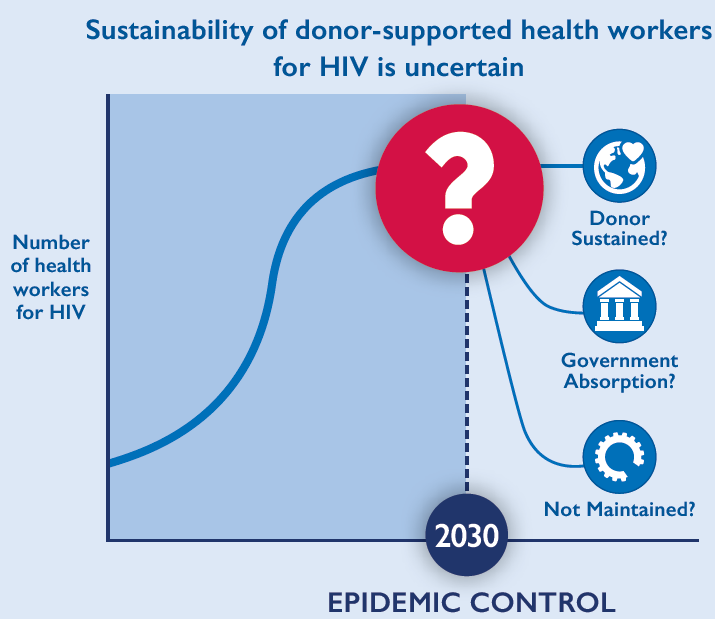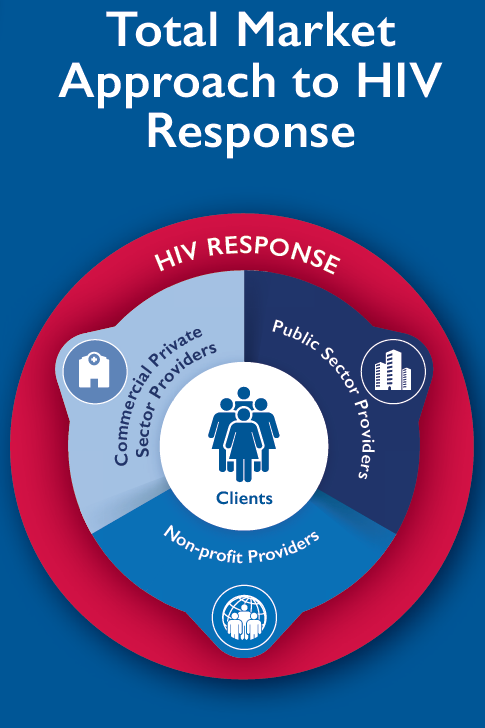Going beyond the public sector workforce to meet global HIV goals
A major challenge in the fight against HIV/AIDS is how to support the workforce required to maintain control of the epidemic. A study of the private health sector highlights opportunities to leverage the private sector to meet 95-95-95 goals set forth by UNAIDS. SHOPS Plus led the study and presented its findings at the International AIDS Conference and the Global Symposium on Health Systems Research.
National HIV responses in many countries are constrained by human resources for health shortages. To accelerate and increase the provision of quality HIV/AIDS services in these settings, it is important to leverage private health care providers.
Sustainability of the health workforce

As countries continue to face fiscal constraints for human resources for health, sustainable financing requires going beyond the public sector. Many countries have received donor support for employing health workers in the public sector to provide HIV testing, treatment, and follow-up. These health workers have been instrumental in the progress against HIV/AIDS, and are essential for achieving epidemic control.
But how will this workforce be supported in the long term?
The private sector is innovating in its service delivery models and how it employs health workers. It is sustainably serving clients from every income quintile, in both urban and rural areas. However, the private sector’s involvement in HIV service delivery depends largely on having a policy environment that allows for a private sector market.
Looking at the total market

A total market approach to the HIV response looks at the public sector and private sector, which includes for-profit and nonprofit entities. Here, the workforce is grouped into three segments to emphasize the potential of the commercial sector alongside the traditionally used public and nonprofit sectors. This sector has not yet been fully tapped to employ health workers for the delivery of HIV services. There is opportunity to leverage private providers to recruit health care workers and maintain their employment outside of donor funding.
The SHOPS Plus study reviewed the private health care sector in India and South Africa. It finds the private sector is innovating in service delivery models and the way it employs health workers. It is sustainably servicing clients from every income quintile in both urban and rural areas. The study concludes with four recommendations for policymakers, donor, and implementing partners. This short video explores the potential of the private health sector.
Potential of the private health care workforce
There are various private health sector models that could be used to contribute to improving results along the HIV service delivery cascade. Learn how to leverage the private sector workforce here. With coordinated encouragement and investment from all stakeholders, the private sector’s health workforce can make a significant contribution to sustaining HIV services.
Take a look at the videos below that show the potential of the private health sector.
Additional resources: